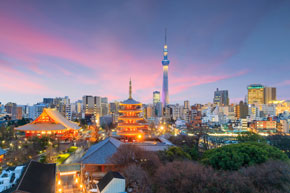Japan's Lost Decade vs. the US Great Recession

Growth Rate vs. Level
To compare the two countries, Research Officer and Economist Guillaume Vandenbroucke noted that it is critical to distinguish between a change in the growth rate of GDP per capita and a change in its level.While real GDP per capita in the U.S. dropped below its trend after 2007, he pointed out that the shock was mostly to the level of GDP per capita, not to the growth rate. However, he added that the growth rate after 2007 was slightly less than before.
In contrast, Vandenbroucke noted that Japan did not experience a sudden drop in the level of real GDP per capita in 1990, but the growth rate dropped considerably. He added that real GDP per capita has been relatively stable in Japan since the early 1990s.
“The Japanese data reveal that the Lost Decade is clearly a case of slow growth rather than of a sudden negative shock to GDP per capita. The U.S. data, slightly varied, reveal that the Great Recession is the opposite case,” he wrote.
(For figures showing the trends in real GDP per capita in the U.S. and Japan, see the Economic Synopses essay “Comparing Japan’s Lost Decade with the U.S. Great Recession.”)
Why Is This Distinction Important?
Whether the change was in the growth rate or in the level has implications for how long it takes GDP per capita to double, Vandenbroucke explained.
For the U.S., which experienced a sudden drop in the level of GDP per capita, he found:
- The pre-2007 average growth rate meant that GDP per capita doubled about every 32 years.
- The slightly slower growth rate after 2007 implies a doubling of GDP per capita every 50 years, assuming the growth rate doesn’t accelerate or slow down significantly.
For Japan, which experienced a considerable drop in the growth rate of GDP per capita, he found:
- The pre-1990 average growth rate meant that GDP per capita doubled every 14 years.
- The post-1990 growth rate implies a doubling of GDP per capita every 80 years.
Based on these numbers, Vandenbroucke noted that it would take about 56 percent more time for GDP per capita to double in the U.S. compared to the earlier period, whereas it would take about 470 percent more time than before to double in Japan.
Additional Resources
- Economic Synopses: Comparing Japan’s Lost Decade with the U.S. Great Recession
- On the Economy: Last Recession Effect: New Car Buyers Hold Cars Longer
- On the Economy: The Baby Boom and the U.S. Productivity Slowdown
Citation
ldquoJapan's Lost Decade vs. the US Great Recession,rdquo St. Louis Fed On the Economy, June 25, 2018.
This blog offers commentary, analysis and data from our economists and experts. Views expressed are not necessarily those of the St. Louis Fed or Federal Reserve System.
Email Us
All other blog-related questions

